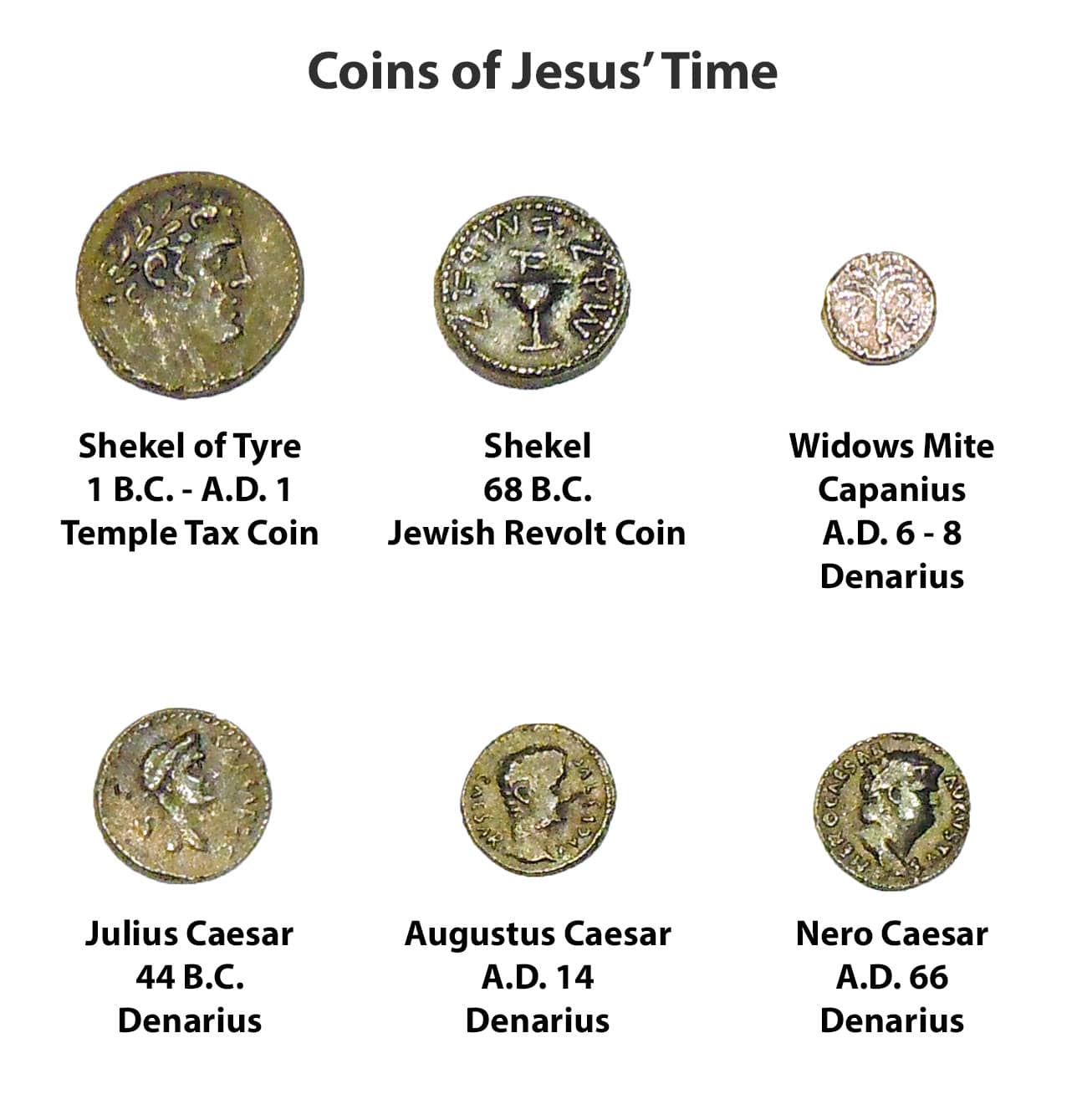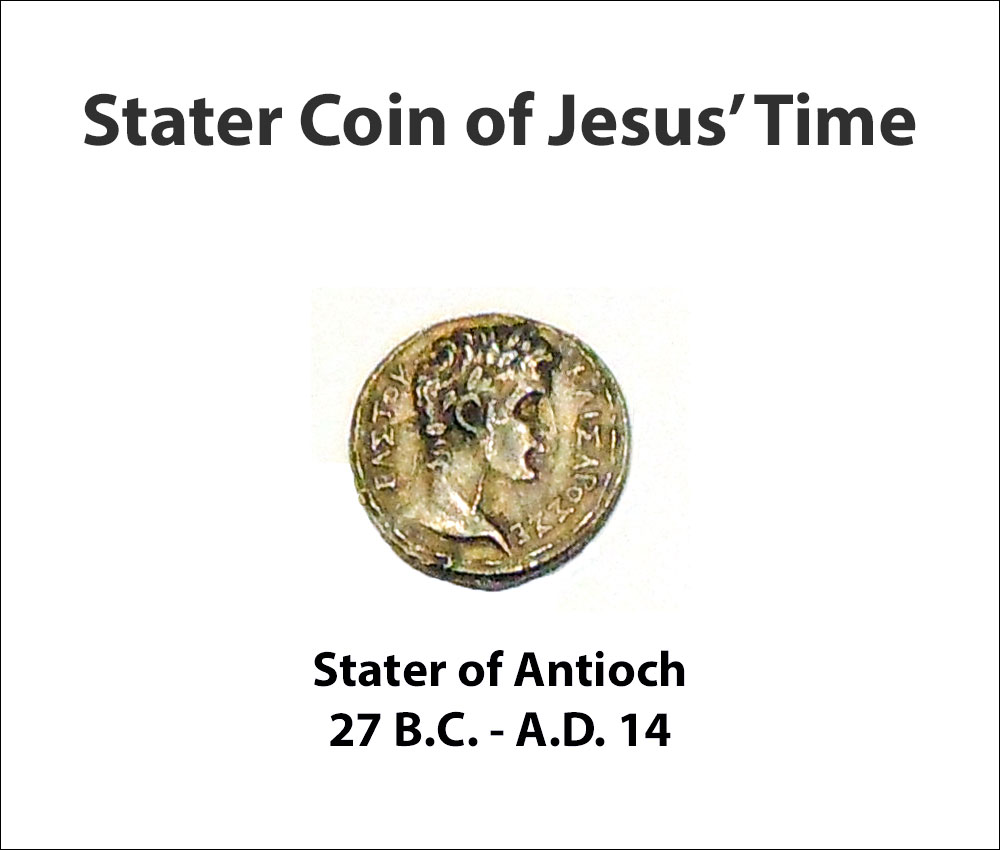Bible Question:
What is a denarius, a shekel, a stater and a widow's mite?
Bible Answer:
Three coins that appear in the gospels are the denarius, shekel, stater and the widow’s mite. The denarius appears most often and the shekel and widow’s mite appear only once.

The Denarius Coin
The denarius is the coin that appears most often in the gospels. It occurs five times in the gospel of Matthew (Matthew 20:2, 9, 10, 13; 22:19). It occurs once in Mark (Mark 12:15), once in Luke (Luke 20:24) and once in Revelation (Revelation 6:6). This silver coin was normally minted in the city of Rome and carried the image of a caesar on one side.[1]
The coin was valued at the amount of money an average laborer would earn in one day or the pay for a Roman soldier.[2] That is, the denarius was the normal wage for one day of labor. For example, in the parable of the laborers in the vineyard in Matthew 20:2, a worker was hired for one day and his pay was one denarius.
For the kingdom of heaven is like a landowner who went out early in the morning to hire laborers for his vineyard. When he had agreed with the laborers for a denarius for the day, he sent them into his vineyard. Matthew 20:1-2 (NASB)
In Matthew 22:19; Mark 12:15 and Luke 20:24 the denarius was also the poll-tax that Jesus told Peter to pay. Jesus asked Peter whose image was on the coin and Peter said it was the image of Caesar.
But Jesus perceived their malice, and said, “Why are you testing Me, you hypocrites? Show Me the coin used for the poll-tax.” And they brought Him a denarius. And He said to them, “Whose likeness and inscription is this?” They said to Him, “Caesar’s.” Then He said to them, “Then render to Caesar the things that are Caesar’s; and to God the things that are God’s.” And hearing this, they were amazed, and leaving Him, they went away. Matthew 22:18-22 (NASB)
The Shekel Coin
The work shekel or half of a stater was the amount of money paid to Judas for his betrayal of Jesus Christ (Matthew 26:15).

In Matthew 26:15 it is referred to as thirty pieces of silver.
Then one of the twelve, named Judas Iscariot, went to the chief priests and said, “What are you willing to give me to betray Him to you?” And they weighed out thirty pieces of silver to him. From then on he began looking for a good opportunity to betray Jesus. Matthew 26:14-16 (NASB)
The Widow’s Mite or Copper Coins
The third coin that appears in the gospels is the widow’s mite in Mark 12:42 and Luke 21:2.
And He looked up and saw the rich putting their gifts into the treasury. And He saw a poor widow putting in two small copper coins. And He said, “Truly I say to you, this poor widow put in more than all of them; for they all out of their surplus put into the offering; but she out of her poverty put in all that she had to live on.” Luke 21:1-4 (NASB)
The King James Version and New King James Version Bibles use the term “mites” because she gave two coins. The new Bibles use the the phrase “copper coins.”
Conclusion:
The widow’s mite communicates an important thought about the coin. It was very small. The coin was less than the smallest coin that Rome made and was valued at 1/64 of a denarius. The widow had 1/64 of a day-laborer’s wage since the denarius was a soldier’s and laborer’s wage.[3] The shekel varied in value depending upon the price of gold. It has been estimated that three denarius coins equaled a shekel. Therefore, Judas was paid almost three months of wages to betray Jesus.
References:
1. “Coins.” Holman Bible Dictionary. Bible Publishers. 1991. p. 274-275.
2. Ibid.
3. Kenneth Bressett. Money of the Bible. Whitman Publishing. 2013. p. 74.